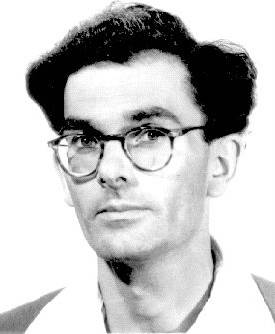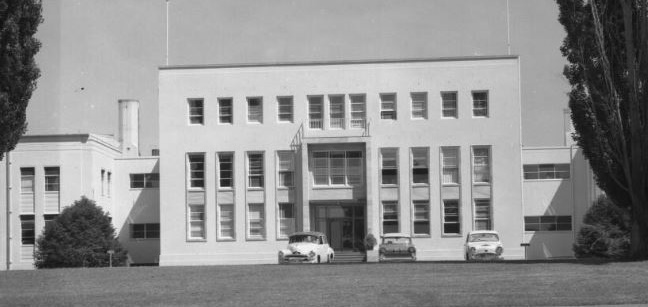Preamble
The Australian Computer Society (ACS) was formed 50 years ago, when the various state computer societies joined forces.
To mark the occasion, the ACS has initiated a heritage project to honour the many individuals who have contributed to the growth of the ICT profession in Australia.
At the heart of the project is a history of computing in Australia. It is not just a history of the ACS, but the history of a profession.
Australia has the longest computing history of any country, excepting the US and the UK, and CSIRAC in the Museum of Victoria is the oldest computer still in existence.
Chapter 17: Trevor Pearcey and the birth of CSIRONET
The first wave of computing in Australia, in the 1950s, was dominated by universities and research establishments, many of whom built their own computers. Computing in Australia, and globally, was transformed in the 1960s as many new suppliers entered the market and large commercial organisations like banks and manufacturing companies discovered the benefits the new technology could bring.
But the vendors’ biggest customers were still in the public sector. Universities and government-owned research bodies continued to dominate lists of the installed base of computing systems in Australia until well into the 1960s. They were joined by other government agencies, mostly at the federal level, though state governments and even some larger local government authorities moved into computing during this time.
Even today government, at all levels remains the largest sector in the computing industry. Sales to government are keenly contested by hardware, software and services vendors.
The story of government and academic computing in Australia in the 1960s was one of massive growth and great innovation. One of the most important developments was in Australia’s great government-owned research organisation, CSIRO.
CSIRO was where computing started in Australia, with the Mark 1 computer. The subsequent growth of computing in CSIRO is closely linked to the career of the man who developed that first computer back in the late 1940s, Trevor Pearcey.
For many years, until 1956, Pearcey’s Mark 1 was only computer in Australia. Then, in 1956, three more computers appeared almost simultaneously – SILLIAC at the University of Sydney, UTECOM at the NSW University of Technology (shortly afterwards to be renamed the University of NSW), and WREDAC at Weapons Research Establishment in Salisbury, South Australia.
CSIRO turns down computing
In the mid-1950s CSIRO decided it would not pursue the development of electronic computing. Pearcey recommended the establishment of a computing division, which was rejected. With the arrival of SILLIAC and UTECOM in Sydney, the Mark 1 was dismantled in 1956 and moved to the University of Melbourne, where it was renamed CSIRAC.
Disappointed, Pearcey returned to his native England in 1957 to resume work at the Telecommunications Research Establishment (now renamed the Royal Radar Establishment) in picturesque Great Malvern, Worcestershire, halfway between Bristol and Birmingham. While in England, Pearcey worked on improving computer programming techniques. He also worked on the advanced EDSAC II at Cambridge, which was pioneering a programming technique later to become known as microprogramming.

Trevor Pearcey in the late 1940s. Source: Pearcey Foundation
He remained in England for nearly two years. In early 1959 he returned to Australia, and to CSIRO, as part of CSIRO’s Division of Mathematical Statistics. One of the reasons Pearcey returned was because of a chance meeting he had in London in 1958 with Edmund Cornish, head of the division, where they discussed the desirability of approaching CSIRO with a “new, well-supported approach for the establishment of a laboratory where [computing] research could be pursued and computing services provided.”
When he returned to Australia, Pearcey was instrumental in the design of the Cirrus computer and was successful in his efforts to persuaded CSIRO to take electronic computing more seriously. It had established a Computing Research Section in Canberra in 1956, but it was underfunded and undermanned until 1962, when a CSIRO executive approved Pearcey’s proposal to vastly increase CSIRO’s computing capabilities and build a network to connect its various research facilities around Australia. It was to be a momentous decision, reversing a decade of neglect.
Networking
In view of the wide geographical distribution of CSIRO’s divisions, other likely users of a scientific computing service, and the high capital and running costs of the large number of separate equipment that would have to be situated in readily accessible locations, Pearcey proposed a network of computing facilities of various levels of computing capability.
In 1962 his proposal was approved by the CSIRO Executive and a £3 million grant was provided by the Commonwealth Government for the establishment of a Section of Computing Research within CSIRO. That amount of money would be in the hundreds of millions of dollars today.
Immediately, CSIRO started work on a purpose-built computing facility at Black Mountain in Canberra and went to tender for suitable computers. The successful supplier was Control Data’s newly established Australian subsidiary. The deal was announced on 19 June 1963, the same day Control Data also won the computing business of the Census Bureau.
Pearcey’s dream was of a network connecting all the CSIRO computers. The 1963 contract was for a CDC 3600 to be installed in Canberra, with smaller 3200s in Sydney, Melbourne, Adelaide and Brisbane. Networking was initially via the physical transfer of tapes, with conversion to ‘electrical transmission’ beginning in 1966.
CSIRONET
Enabling the CSIRO machines to communicate directly with each other was a difficult talk with the technology of the time. The Post-Master General’s Department (the precursor to Telecom and Telstra) had been experimenting with computer communications for some time, and announced successful tests using DEC computers in 1966. Pearcey had to work almost from scratch to develop the computer network that was to become known as CSIRONET.
His initial efforts were based around ensuring total compatibility between all the CSIRO machines through uniformity of programming languages, file structures and peripherals. That meant that when the machines were connected by low speed data lines they could share data, though all processing was still in batch mode.
True data communications capabilities were to come slowly, and involved substantial tweaking to the operating system, and the replacement of teletypes with CRT terminals. In his book on the early computing in Australia, Pearcey describes in detail the intricacies of developing real-time networking for CSIRONET.
Pearcey and his team developed a new operating system called DAD (Drums and Displays), which enabled the CSIRO machines to operate together as a single network. It was the first large scale computer network in Australia, and one of the first in the world.
Computer networking globally was in its infancy and there was no standardisation. Each network developed its own methodologies and protocols. The first generation of CSIRONET was a hierarchical network that relied strongly on the computing power of its central Canberra data centre.
It was not to adopt standardised peer-to-peer networking protocols until these become the norm in the 1980s. The biggest advance in networking in the 1960s happened in the USA at the end of that decade, in 1969, with the birth of Arpanet, which was to become the Internet.
Previously published:
Chapter 16: Enter the minicomputer – DEC comes to Australia
Chapter 15: The IBM S/360 in Australia
Chapter 14: IBM redefines the computer industry
Chapter 13: Control Data Australia (part II)
Chapter 12: Control Data Australia (part I)
Chapter 11: The Australian Computer Society
Chapter 10: Five Computer Societies
Chapter 9: Australian made, Australian designed
Chapter 8: Australia's Computer Industry in 1962
Chapter 5: SILLIAC and the Snowy Mountains Scheme
Chapter 3: Harry Messel and the birth of SILLIAC
Chapter 2: The first Australian Computer Conference
Chapter 1 -The start of Australia’s computing history
Veteran ICT journalist Graeme Philipson is researching and writing the Heritage Project book, which is due for release on the 50th anniversary of the formal incorporation of the ACS, on 3 October 2017.
The project also involves the creation of a ‘virtual museum’, cataloguing hardware and other artefacts, and collecting and curating documents on the history of the industry, including oral histories of as many people as possible.
Please get in touch with Graeme if you would like to contribute, at [email protected]
Do you have early memories of the ICT industry in Australia? Help us make history by sending us your story! Record or write your memories to be included in our historic ACS Heritage Project. Details here.










